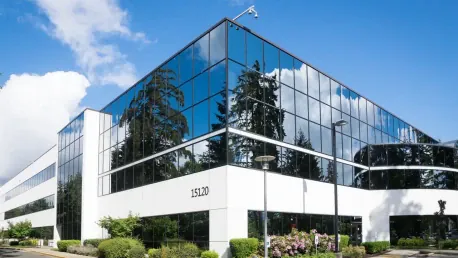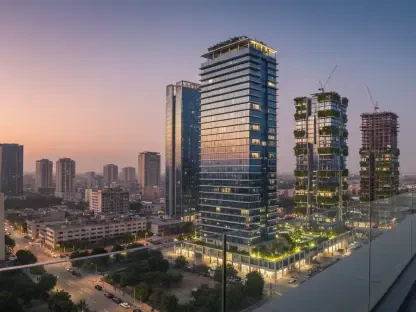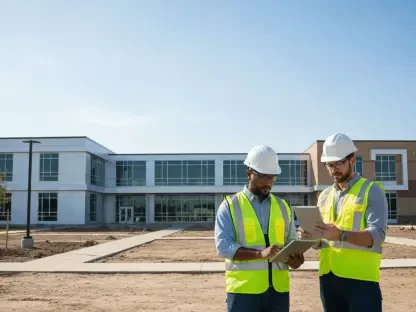The commercial real estate landscape in Florida is experiencing dynamic shifts influenced by technological advancements, economic changes, and evolving consumer preferences. This analysis aims to delineate the anticipated trends for 2024, examining the interplay of smart technologies, sustainability initiatives, and flexible working environments. This document will provide insights into how these trends could impact investment strategies and business operations, offering a comprehensive, forward-looking view of Florida’s commercial property sector.
Economic Influences
Post-Pandemic Economic Recovery
Economic forces are a critical determinant of trends in Florida’s commercial real estate market. Understanding the role of economic recovery post-pandemic is essential for predicting future trends. Florida demonstrated significant resilience during recovery phases, with robust potential for attracting promising investment opportunities. Key focal sectors include tourism-driven hospitality, which is expected to recover as travel restrictions ease and consumer confidence builds.
Furthermore, shifts in consumer behavior and business operations will affect demand across different property types. The e-commerce boom is likely to benefit industrial properties, whereas traditional retail spaces might face challenges. Equally, the hybrid work model shift would transform office spaces, promoting flexibility and reducing the need for conventional office setups.
Strategic Implications for Investors
Investors should align their strategies with Florida’s economic pulse, leveraging local economic data to inform decisions. This ensures a proactive rather than reactive investment approach, which is critical for thriving in a recovering market. Anticipation and adaptation to shifts in consumer behavior, such as focusing on flexible or co-working spaces for businesses adopting hybrid models, can position investors advantageously.
Being ahead of the curve in recognizing and investing in economically resilient sectors, such as industrial and hybrid workspaces, will likely lead to substantial returns. Investors should also consider the long-term implications of these shifts and how they align with broader market trends within the state.
Technological Innovations
Adoption of Smart Technologies
Technological advancements are transforming the operations and evolution of the commercial real estate sector in Florida. Smart buildings are becoming increasingly prevalent, with 56% of property managers in Florida adopting IoT and AI systems as of recent surveys, and this trend is projected to increase by 20% in 2024. Smart technologies optimize energy efficiency and enhance security, reflecting a significant shift towards sustainability.
The adoption of smart technologies also coincides with increasing tenant demands for enhanced environmental and security features. These innovations not only contribute to the operational efficiency of buildings but also align with broader environmental goals. This is particularly important as regulations around energy use and sustainability become more stringent.
Virtual Reality in Property Engagement
Virtual reality (VR) is revolutionizing property engagement, enabling potential tenants and investors to explore spaces remotely. This significantly reduces the need for physical visits, thereby accelerating decision-making processes. Data shows that 63% of real estate firms have reported increased engagement and faster transactions with the integration of VR technologies.
Besides enhancing engagement, VR technologies offer a practical solution for showcasing properties to interstate and international investors. The ability to provide immersive virtual tours adds value, especially for large commercial spaces where physical tours can be time-consuming and logistically challenging. This technological advancement is setting a new standard in the commercial real estate field.
Strategic Implications for Real Estate Professionals
Embracing and integrating smart technologies in building design and management not only aligns with sustainability goals but also enhances tenant experiences and operational efficiency. Real estate professionals must incorporate these innovations to remain competitive and attract tech-savvy tenants and investors.
By staying abreast of these technological trends, real estate professionals can provide a superior level of service and secure long-term tenants. Furthermore, leveraging technology-driven data analytics can offer actionable insights into tenant preferences and behaviors, informing better management and investment decisions.
Retail Space Transformations
Impact of E-commerce on Retail Spaces
A significant transformation in Florida’s retail spaces is driven by evolving consumer preferences and the digital disruption brought on by e-commerce. Experiential retail is emerging as a key trend, where physical retail spaces adapt to create immersive in-store experiences that compete with the convenience of online shopping.
The traditional retail landscape is being redefined as online shopping grows. Retailers are increasingly focusing on creating unique, memorable experiences that draw consumers into physical stores. This shift includes integrating technology, like augmented reality (AR) for virtual try-ons, and hosting events that foster community engagement and brand loyalty.
Demographic Shifts and Urban Development
As e-commerce intensifies market competition, traditional retail spaces face reduced foot traffic. In response, retail design is increasingly focusing on creating engaging and community-centric environments to attract consumers. Additionally, retailers are targeting demographic shifts and vibrant urban settings, adjusting leasing strategies accordingly.
The demographic changes in Florida’s urban areas, characterized by an influx of younger, more tech-savvy populations, are reshaping retail demands. This trend is prompting retailers to innovate and upgrade their spaces, incorporating social and interactive elements that cater specifically to younger consumers’ preferences and urban lifestyles.
Strategic Implications for Retail Design
Adapting to these changes requires innovative approaches to retail design that align with consumer preferences and demographic trends. Emphasizing experiential and community-focused retail environments can drive engagement and foot traffic, enhancing competitiveness in the market.
Retailers and property developers must strategize to utilize urban development trends, investing in prime locations that promise high visibility and accessibility. They must also collaborate closely with local communities to understand and meet their specific needs, facilitating the creation of vibrant retail environments that support long-term business growth.
Office Space Dynamics
Emergence of Hybrid Work Models
The emergence of remote and hybrid work models is transforming the office space sector in Florida. Businesses are increasingly moving away from traditional office setups, opting for flexible designs that accommodate hybrid work environments. This shift aims to foster a sense of community even when employees are not physically present.
The pandemic has significantly changed how businesses approach employee workspaces, leading to reduced reliance on fixed office setups. Companies are now prioritizing designs that allow employees to work both remotely and in-person seamlessly, providing functional yet adaptable spaces suited to varying work requirements and preferences.
Popularity of Coworking Spaces
Coworking spaces are gaining popularity, attracting diverse workforces seeking collaborative environments. These spaces are strategically located in urban development areas, ensuring access to amenities and transportation. Lease negotiations are focusing on adaptability and scalability, reflecting evolving business needs.
Coworking spaces are not just appealing to startups and freelancers; larger corporations are also adopting these spaces to provide flexibility and connectivity. These spaces often offer additional benefits such as community networking events, professional development opportunities, and state-of-the-art facilities, contributing to their growing popularity.
Investment in Employee Wellness Features
Additionally, data indicates that investment in employee wellness features such as ergonomic furniture, natural lighting, and mental well-being amenities is driving demand for office spaces. Companies are recognizing the importance of creating healthy work environments to boost productivity and satisfaction.
Features that promote physical health and mental well-being are becoming standard in modern office designs. Offering environments that enhance natural light, encourage movement through design, and provide quiet spaces for relaxation proves beneficial in retaining top talent and boosting overall employee morale and productivity.
Strategic Implications for Office Space Design
Understanding the evolving dynamics of office spaces and prioritizing wellness-oriented design can position businesses competitively. Proactive adaptation to hybrid work models and investing in flexible, amenity-rich office environments ensures alignment with current trends and future needs.
For property developers and managers, investing in these forward-thinking office solutions offers a distinctive advantage in a competitive market. Offering versatile, health-focused, and communal work environments can lead to higher occupancy rates and tenant satisfaction, setting these spaces apart in a rapidly evolving industry.
Industrial Sector Growth
Demand for Warehouse Spaces and Logistics Expansion
The industrial sector in Florida is experiencing significant growth, driven by demand for warehouse spaces and logistics expansion. Florida’s strategic geographical position as a gateway for domestic and international trade is a major factor fueling this growth. A 12% increase in warehouse space leasing in 2023 is indicative of the surge driven by the e-commerce and manufacturing sectors.
Florida’s position as a prominent logistics hub is being bolstered by infrastructure improvements, such as enhancements at major ports including Miami and Jacksonville. These upgrades facilitate higher cargo capacities and streamlined operations, thereby attracting more global distribution centers and fostering robust growth in the industrial property market.
Technological Advancements and Economic Shifts
Key points driving this growth include infrastructure enhancements at ports like Miami and Jacksonville, which support increased cargo volumes. These upgrades are attracting more distribution centers, further stimulating the industrial property market. This trend is reflective of broader economic shifts and technological advancements within the state.
The expansion of smart logistics technologies is playing a crucial role. Autonomous vehicles, drones, and advanced inventory management systems are being adopted to improve efficiency and reduce costs. These technologies are making Florida’s industrial sector more attractive to investors looking to capitalize on emerging trends within the supply chain and logistics industries.
Strategic Implications for Industrial Sector
Investing in the industrial sector aligns with the momentum created by increasing demand for efficient logistics networks. Understanding and capitalizing on the strengths of Florida’s strategic position for trade can provide substantial returns and position investors as key players in the industrial growth narrative.
For investors, aligning with this growth trajectory means targeting sub-sectors such as cold storage, last-mile delivery facilities, and technologically advanced warehouses. By focusing on these areas, they can enhance their portfolios in a sector poised for sustained long-term growth driven by innovation and strategic geographic advantages.
Environmental and Regulatory Changes
Impact of Green Initiatives
Sustainability is increasingly central to Florida’s commercial real estate development, with green initiatives impacting over 60% of new projects. Stakeholders are prioritizing eco-friendly designs, which not only reduce carbon footprints but also provide financial advantages. Green-certified buildings report higher occupancy rates and rental premiums, driven by rising tenant and investor preference for sustainable properties.
The environmental benefits and economic incentives associated with sustainable buildings are significant drivers behind this trend. Features such as energy-efficient systems, green rooftops, and renewable material usage help reduce operating costs and attract environmentally conscious tenants who value sustainability in their business practices.
Adapting to New Regulations
Regulatory changes present compliance challenges, with increased adaptation costs. Local governments are increasingly revising zoning laws to encourage eco-friendly construction and optimize land use. By 2024, mixed-use zoning promoting residential, commercial, and recreational space combinations is expected to grow, driving community-centric urban development.
The shift towards mixed-use developments is encouraged by both consumer demand and legislative support. These projects integrate living, working, and recreational spaces within the same area, promoting sustainable urban living and reducing commuting needs. This approach not only benefits the environment but also creates vibrant, dynamic communities that enhance quality of life.
Strategic Implications for Investors and Developers
A proactive approach to adapting to regulatory changes fosters long-term value, ensuring compliance and promoting sustainable development. Collaboration with regulatory bodies and industry leaders can provide critical insights, positioning stakeholders favorably while contributing to Florida’s eco-friendly growth trajectory.
For developers and investors, aligning with regulatory trends by integrating sustainable practices and meeting new zoning requirements can lead to financial gains through higher property values and rental premiums. Engaging with community stakeholders and adhering to environmental standards will be key in driving success and fostering goodwill within the market.
Conclusion
The commercial real estate scene in Florida is undergoing significant changes driven by advancements in technology, shifts in the economy, and changing consumer preferences. This analysis looks ahead to 2024, aiming to map out the expected trends by examining the role of smart technologies, sustainability efforts, and adaptable work environments. One of the key aspects driving the shift is the integration of smart technologies. These innovations are making buildings more energy-efficient, secure, and comfortable, ultimately enhancing the tenant experience. Moreover, the push toward sustainability continues to grow stronger, with more developers and businesses adopting green building practices and focusing on reducing their environmental impact.
Flexible workspaces are another growing trend, reflecting changes in how businesses and employees approach their work. The rise of remote work and hybrid work models is leading to a demand for office spaces that offer versatility and cater to a variety of working styles.
This forward-looking analysis will provide valuable insights on how these trends are likely to influence investment strategies and business operations in Florida’s commercial property sector. Whether you’re an investor, developer, or business owner, understanding these dynamics is crucial for making informed decisions and staying ahead in a rapidly evolving market. In essence, Florida’s commercial real estate market is on the brink of an exciting transformation, with immense potential for those who adapt to these emerging trends.









